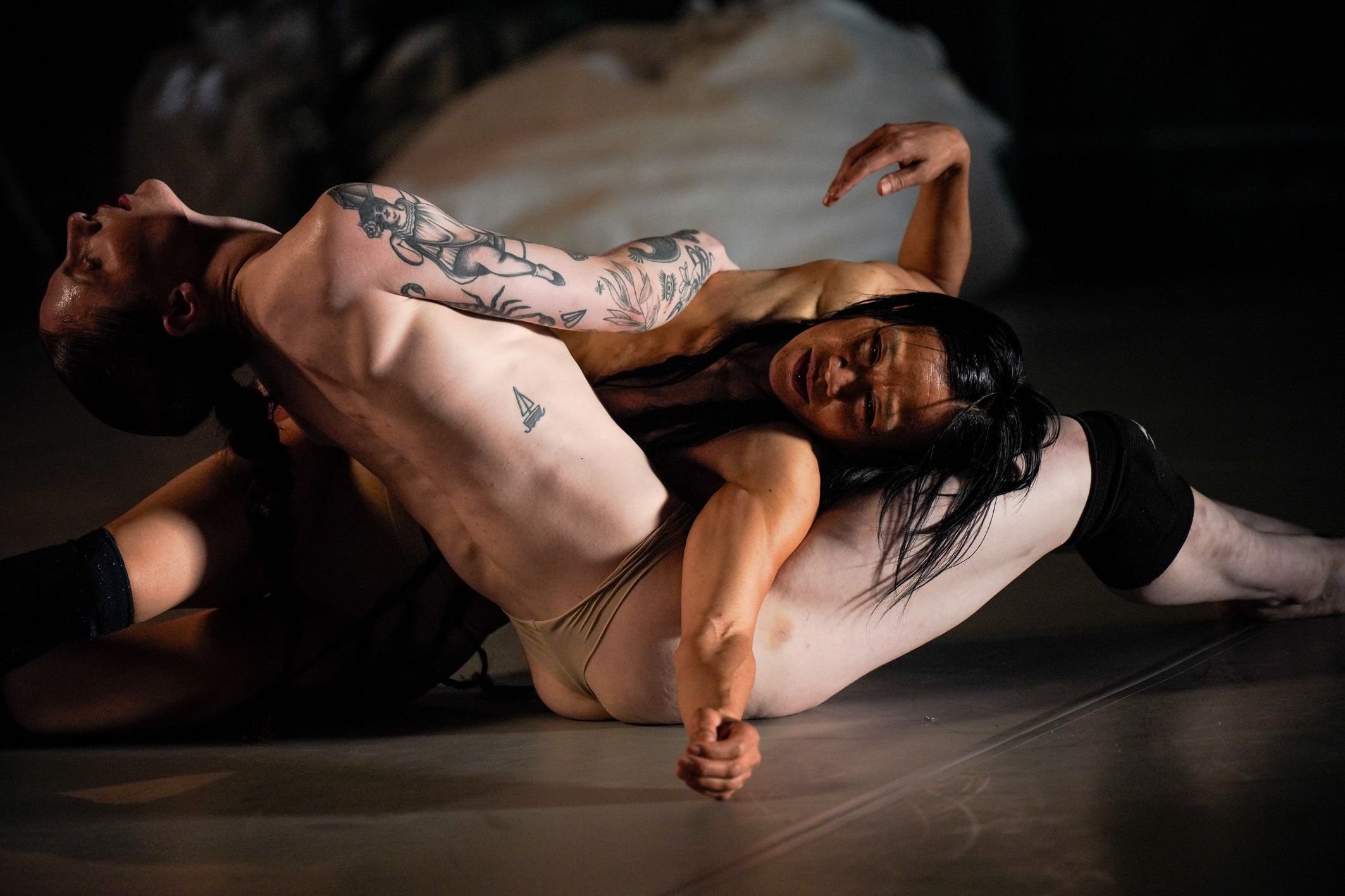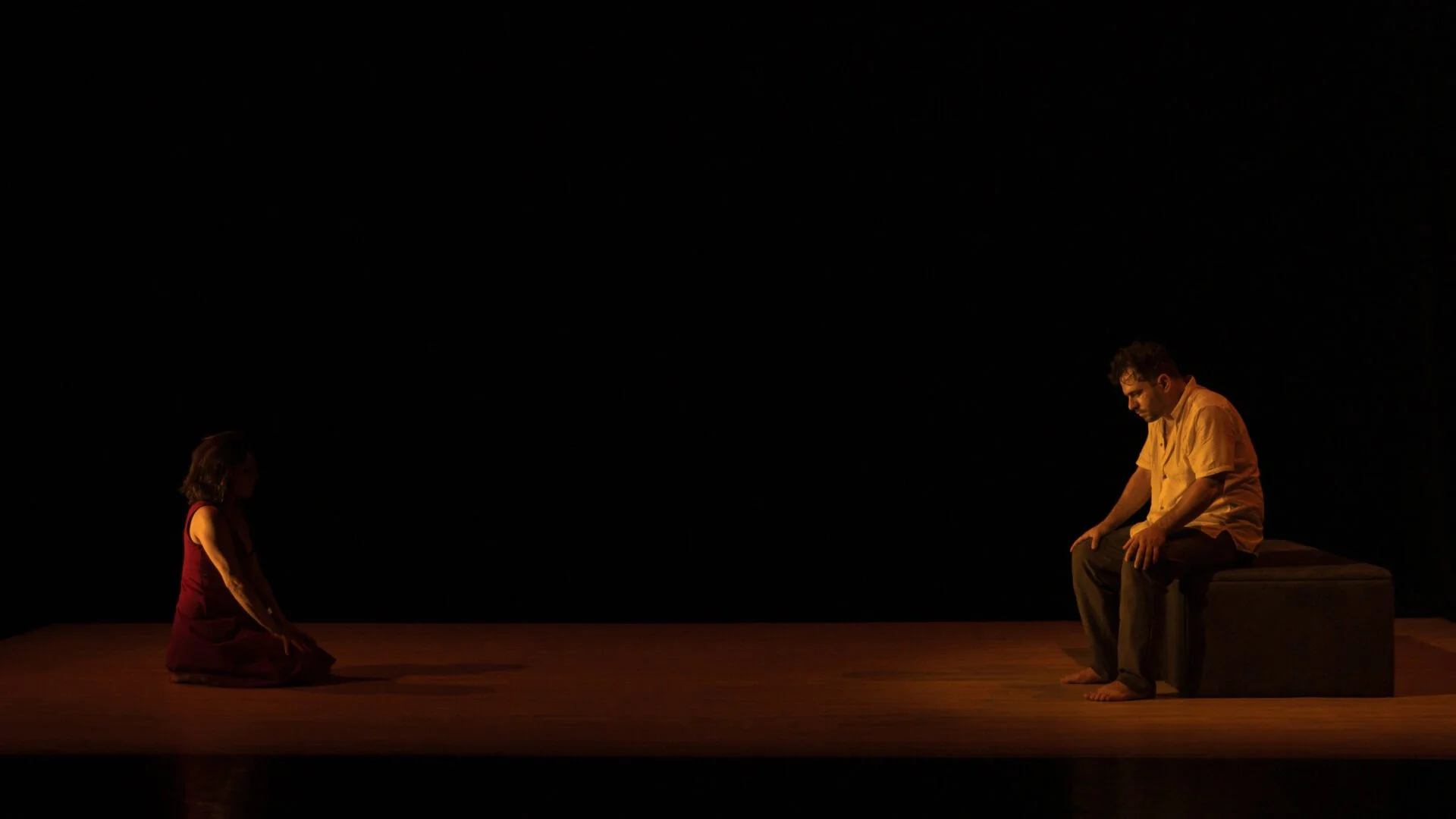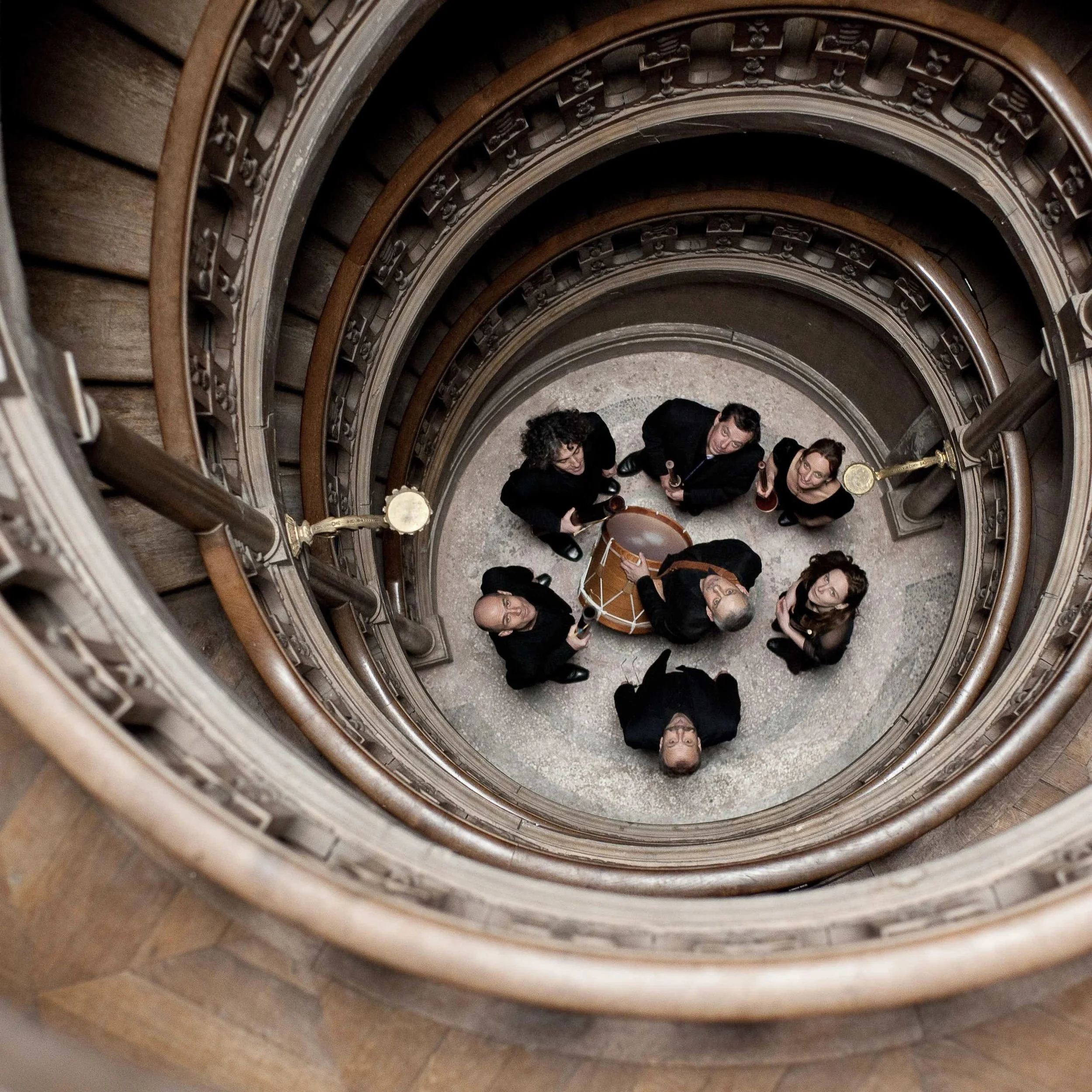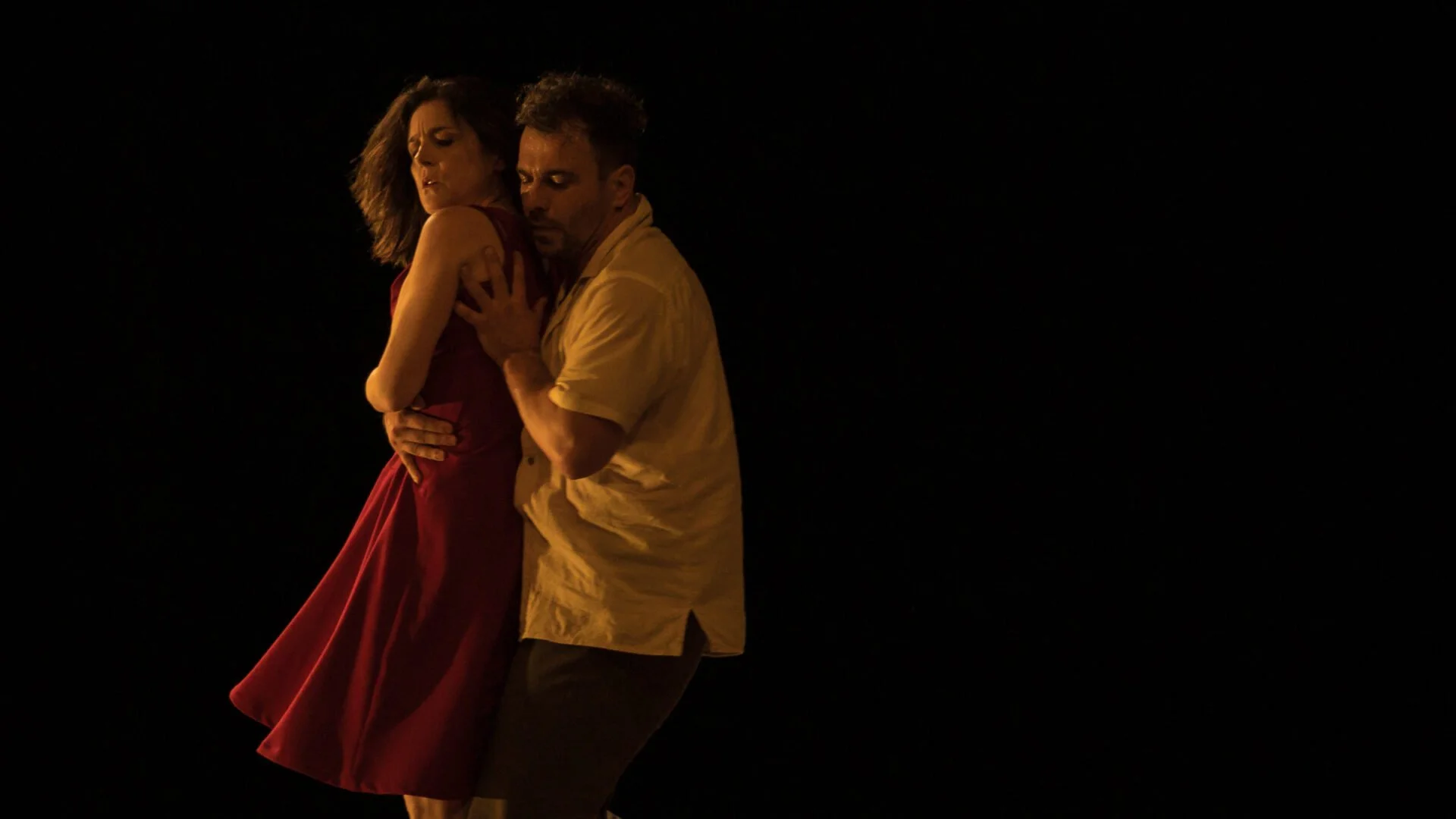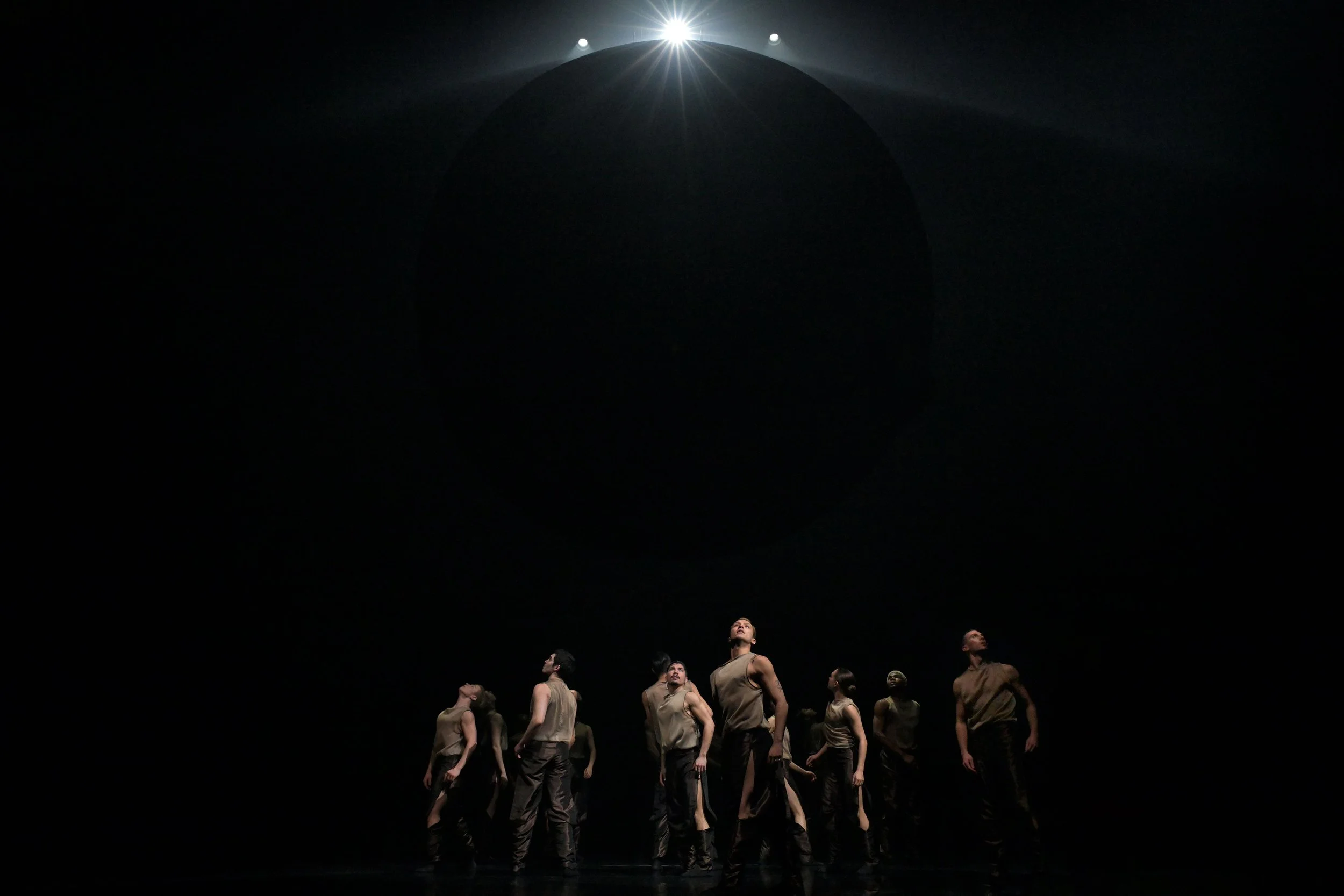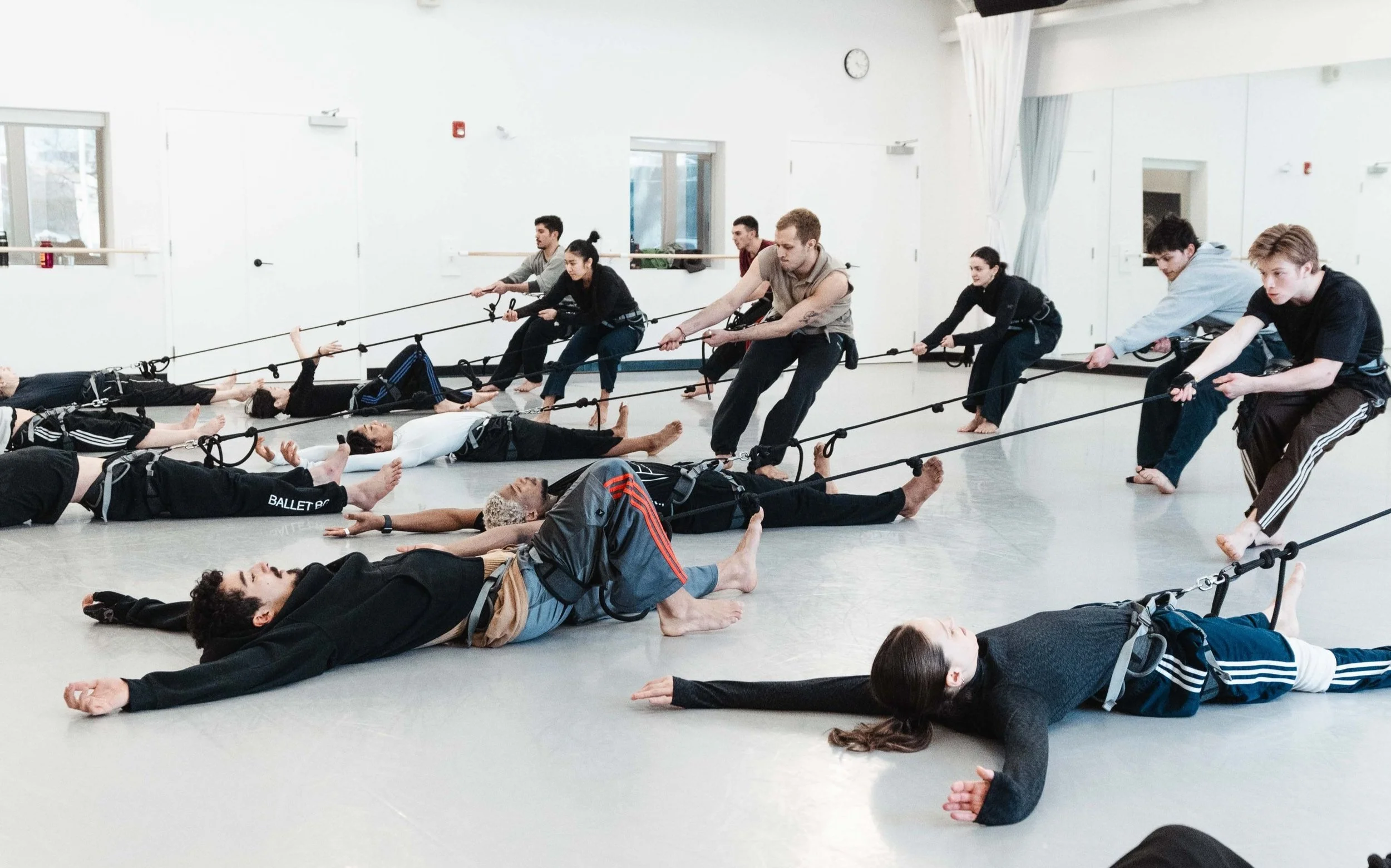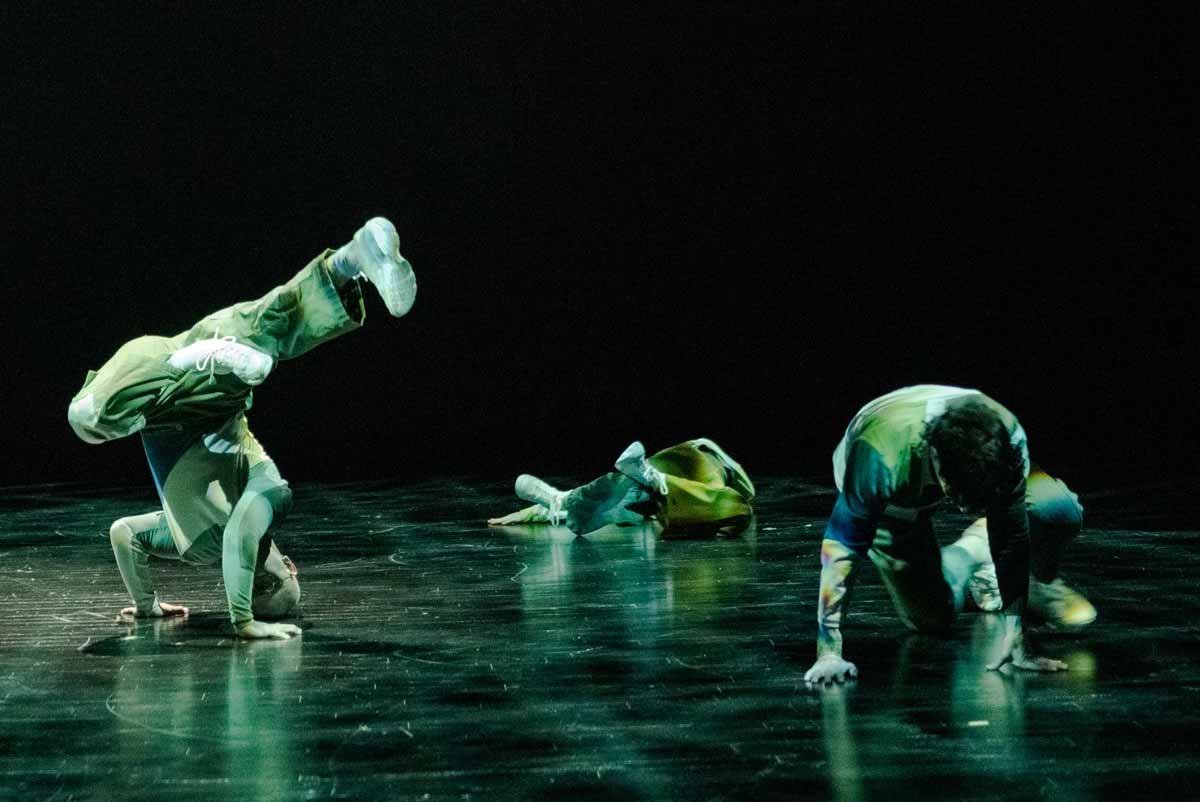Dance review: Set in a stripped-down concrete jungle, BOGOTÁ explores colonial resistance
Multilayered work by Andrea Peña & Artists is full of animalistic ritual, raw emotion, and nods to Colombian history
BOGOTÁ. Photo by Felixe Godbout Delavaud
PuSh International Performing Arts Festival and New Works presented BOGOTÁ at the Vancouver Playhouse on January 31 and February 1
ONE OF THE most powerful scenes in BOGOTÁ comes when a dancer begins whacking a black piñata with a long wooden rod while Colombia’s national anthem sounds out over the theatre.
In this work by Andrea Peña & Artists, another dancer across the stage faces the audience atop a stack of black boxes, vibrating their entire body. When the piñata has been ripped to shreds, it all stops—the movement, the music—and Colombian-born, Montreal-based choreographer Peña walks slowly onstage in her everyday clothes. Crouching humbly, she uses a Colombian flag as a rag to clean up the debris littering the floor.
Conceptually brilliant and layered with meaning, the scene intertwines the childhood innocence of a birthday celebration with rebellious colonial resistance, suggesting the coexistence of joy and pain. Those undercurrents flow throughout this nine-dancer work at the PuSh International Performing Arts Festival, as the production draws on elements of history and mythology to examine how colonization and genocide have impacted Colombia.
A striking component of the show is its scenography by Peña and Jonathan Saucier. In the upstage-right corner looms a three-storey-high scaffolding structure which the dancers take turns scaling over the course of the piece, weaving through the bars and hanging off its sides. Across the room, long swaths of plastic dangle from the rafters like a waterfall, the stack of black boxes beneath it emulating a cluster of boulders.
It’s a stripped-down take on a concrete jungle, and the performers lean into the animalistic ritual it inspires. At the beginning of the piece, they appear onstage one by one with slow, confident strides, outfitted only in thongs. One dancer stretches languidly out on the floor, arching their back and rolling their head; another lazes atop the black boxes like a jungle cat basking in the sun. The scenes and shapes created here evoke the bodies shown in Andean Baroque imagery, an acknowledgement of Spain’s colonial impacts on Colombia.
BOGOTÁ. Photo by Andrea Avezzù
Elsewhere, the dancers interact with a smaller piece of scaffolding on wheels; one performer wraps their body horizontally around a stainless-steel bar like a snake, and then a whole troupe of them clamber onto it, rolling it around the stage and laughing maniacally like a pack of wild animals. There is also lots of great partner work throughout, particularly when it comes to the lifts (often, the person being lifted hangs effortlessly limp in their partner’s arms, strewn sideways or dangling upside-down). The amount of trust these dancers have for one another is commendable.
Throughout BOGOTÁ, the performers’ movements are both sensual and predatory, muscles rippling. They don’t shy away from their nudity; it simply helps emphasize their strength and grace. But as the work progresses further, we see the dancers slowly clothe themselves in track pants, jeans, and mesh tops—perhaps repressing their true selves in a subtle comment on the stifling nature of colonialism.
The accompanying score interweaves beats by electronic musician and sound designer Debbie Doe with nature noises—the thrum of insects, the squawking of birds—recorded by Peña herself during a visit to the Amazon rainforest. It’s yet another example of how deeply personal this work is for the choreographer; she is revealing both individual and cultural histories, conjuring intimate imagery of rebirth and resilience.
BOGOTÁ fearlessly addresses Colombia’s past. The dancers here bring true complexity, nuance, and artistry to the table, allowing them to tell a compelling story from start to finish. With its visionary innovation, nods to the past, and bold portrayals of raw human emotion, BOGOTÁ may be key to helping viewers carve their own paths forward in the post-colonial era. ![]()




